The year 1971 was a significant one, bearing witness to some profoundly influential events across the globe, culturally and politically. Sinn Féin ended a 65-year abstentionist policy at a party conference in Dublin, Satchel Paige was the first black league player to be elected to the Baseball Hall of Fame and Edward Heath was the UK’s PM – leading a Conservative Government that steered us into joining the European Communities that then became the European Union. In rock music, The Doors were singing about riders on the storm, Led Zeppelin introduced Stairway to Heaven to the world, and Pink Floyd played their subversively crowdless gig in Pompeii where the music emphasised the scale and beauty of the natural environment. Music and pop culture seemed to galvanise a generation more awake to alternative futures, driven by a greater sense of self with a hunger for more political engagement. Change was in the air.
1971 also marked the birth of one the UK’s most historically significant climbers. Neil Gresham has influenced the world’s climbing scene for more than 35 years, with seemingly no signs of slowing down. With a first ascent of Lexicon – graded E11, and a plethora of significant repeats including Indian Face, Equilibrium and Meshuga. It is perhaps no surprise that his influence has been so far reaching, born into an epoch which nourished such significant cultural and political change.
I caught up with Neil in Kendal, a place we both now call home. I wanted to seek insight into one of the world’s living climbing legends and understand how life, and its changes, have played out for Neil. During our time together I learnt that we all bear the witness marks of our time in the universe and that some are more visible than others. Most importantly though, not all scars are bad – they just serve to remind us that we are alive and moving forward with the arrow of time.
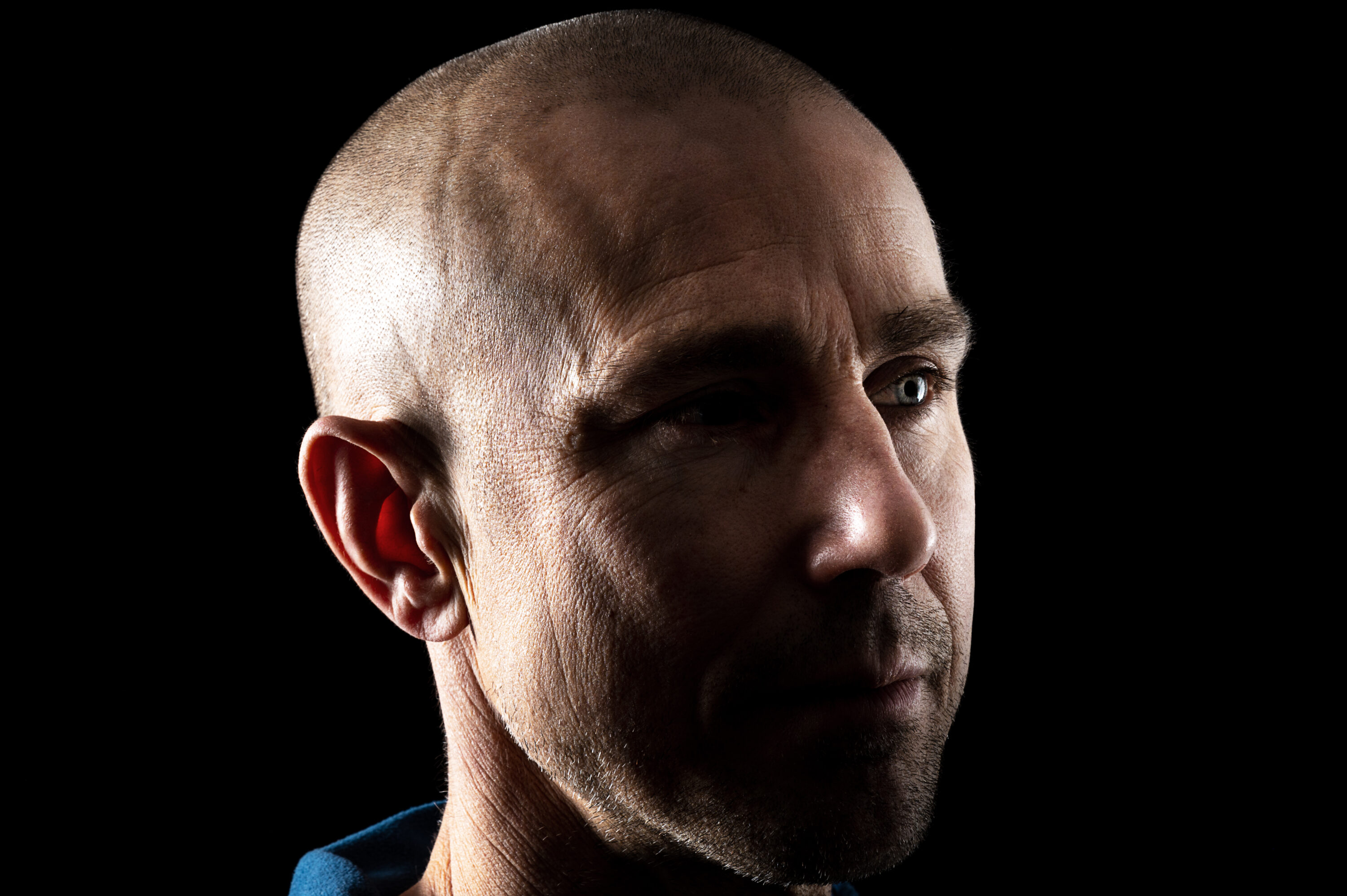
© Marc Langley
So, Lexicon, tell me about that.
I certainly couldn’t have predicted the amount of interest in the route so quickly after completing it, that’s for sure. I knew Steve McClure was super keen to get straight on it after but I absolutely didn’t foresee the likes of Dave MacLeod, Neil Mawson, Craig Matheson, and Franco Cookson paying such interest.
Reflecting back, I wonder if the post-Olympic hangover played its part? Indoor climbing being as popular as it is and its relationship with Generation Z, I think outdoor climbers wanted to rise up and be counted riding the post-lockdown zeitgeist. I heard people talking about indoor climbing – how it’s all well and good but when is the channel going to change? I did feel like the tide was being held back somewhat, everyone was waiting for the Olympics which didn’t go entirely to plan, then there was a bit of clamour surrounding the format with people saying it was an anticlimax. Then suddenly boom, there was this new hard, and dare I say cutting-edge trad route on Pavey Ark – so for me it felt like a personal antidote to the boom of indoor climbing and recent global affairs.
On the surface it seems the Lake District is all climbed out. Would you agree with this?
You have to cut between the hearsay and what you see with your own eyes. For me it was about going out and seeing for myself. Sure enough, I’ve heard soundbites singing the narrative that all the obvious lines have been done and what’s left are just fillers – contrived gaps between already established routes or totally blank protection devoid death walls. The truth I think is somewhere in the middle.
If we use Lexicon as an example, it is the super direttissima on the crag, but it shares some climbing with another route in the middle section. Is that to say it’s not worth doing? The likes of Dave Macleod and Steve McClure certainly didn’t think so.
Another example would be If 6 was 9 at Iron Crag, realising the original route only goes two thirds of the way up the crag with a huge headwall which hadn’t been climbed was a ludicrously obvious feature to me. I agree it was still a new finish to another route but with that came significant amounts of additional climbing. It goes without saying that everyone is going to have their own opinions on whether they think something new like Lexicon or Final Score is worth climbing, but if you look at every other popular crag in the UK like Malham or Raven Tor for example, routes are getting extended all the time.
There has been a bit of resistance regarding some of the new routing I have done. A feeling of indignation and this perception that I’m the first person to do what I have done, which to me is just utter nonsense. It’s always the case that the obvious lines of weakness get climbed first with things evolving afterwards with harder starts or the more direct lines. I think this is the somewhere-in-the -middle I referred to earlier, not super independent lines or features but more direct lines to already well established routes.
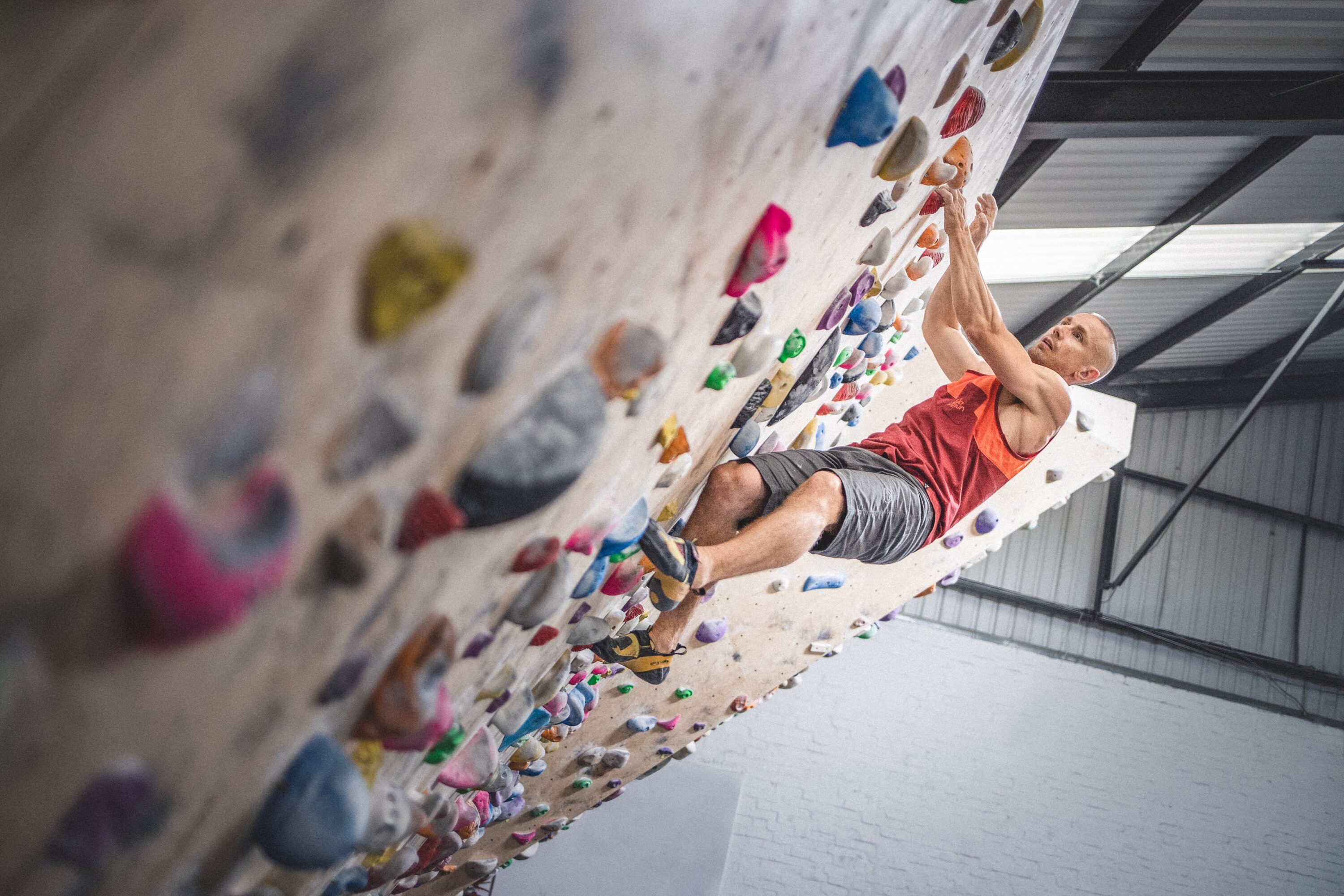
© Ben Grubb
If you look historically at all our best trad climbers, they are a bunch of total lunatics, oddball misfits somewhat unhinged and unpredictable
There’s a theory that as you get older your appetite for risk declines. Having just established a new E11 at 50, almost 28 years after climbing the Indian Face, I’m curious to know how this theory plays out on you… how has your appetite towards risk evolved?
To answer this question in its broader sense it’s probably worth pointing out that in my early teens I was quite timid. I was trad climbing then but I built my way up through the grades quite steadily. I certainly wasn’t pushing the envelope – I was quite cautious. But then, after a turn of events aged 24 I ended up climbing Indian Face which triggered a whole decade of big number trad routes, some of which were on-sights up to around E7 but mostly head pointing on E9(s) and an E10. It was a sustained period where I was definitely pushing the envelope. After about a decade of climbing right on the edge, I basically just called time.
If I kept going at the rate I was, the law of averages would indicate that things probably wouldn’t work out so well for me. So instead, I started heading out on more adventurous trips and climbing whatever style I came across – sport, trad deep water solo, I didn’t really care. Then I moved even further away from the riskier end of climbing and dedicated nearly all my time to sport climbing.
In my early twenties I had climbed 8b+ but I came back to sport in my late 40s and climbed 8b+ again, then 8c and a new 8c+ at Malham which I called Sabotage. I certainly didn’t predict a return to traditional climbing at all but then I moved to the Lake District and things changed. I started exploring my new backyard and seeing new route potential. Quite frankly, I became incapable of walking away from these obvious lines which looked like some of the juiciest lines I had seen. And so I began climbing hard trad again starting with a direct finish to Fear of Failure (E8) at Dove Crag, which I called Fearless (E9); this whetted my appetite for sure and I soon set out and established Final Score (E10) the direct finish to If 6 was 9 further embedding my inability to walk away from these lines I had spotted.
However, after I climbed the new line of Dove Crag it really started to sink in that my family’s financial dependency lay entirely on me – I did start to question should actually being doing this? I realised that I had pushed my sport grade up significantly and I had all the previous trad climbing experience to fall back on, plus my psychological strength, which I feel has always played a much more prominent role in my climbing than my physical strength.
Bizarrely, Fearless on Dove Crag was probably the most dangerous of the routes I have done in the last three or four years; if you mess the start of that up there is no ambiguity about what will happen to you. However with Final Score, the gear might hold on If 6 was 9 but who knows? If it does then it’s as safe as a sport route but if it doesn’t then you’re in some serious shit.
With Lexicon there was the classic backlash from the armchair checkers saying it is safe, so how can it be E11? For starters none of them had even been on it! It was safe to fall off with maybe the exception of the last two moves. This was based on the knowledge that the gear is bomber. But it is a massive fall, so with the included rope-stretch you would come very close to the ground.
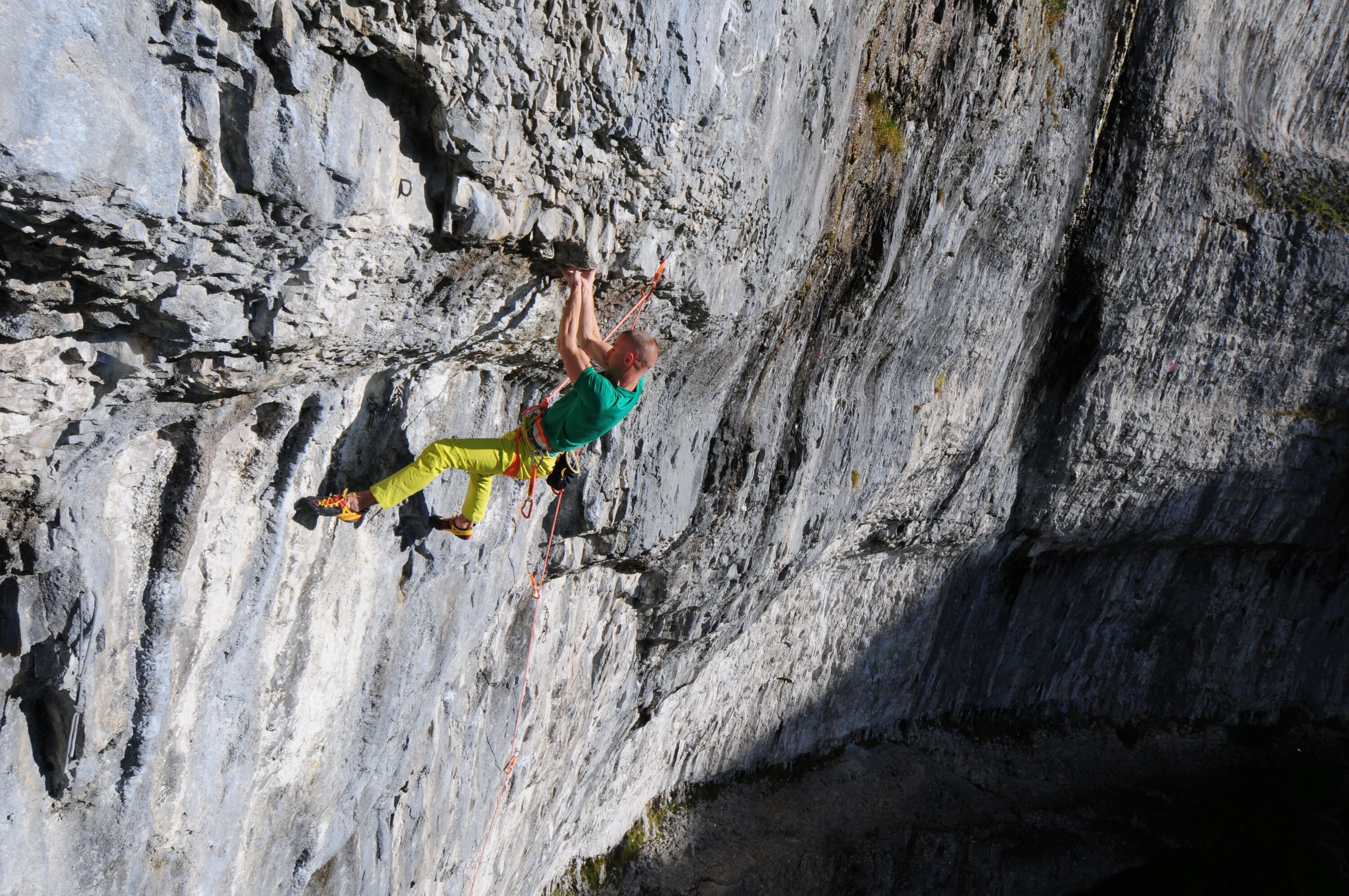
© Ian Parnell
Despite that, I convinced myself that you wouldn’t actually hit the deck, even if you fell the entire 90ft of the crag. I had done the usual bag fall tests, measured the distance etc and I genuinely felt confident with the aforementioned conviction. Steve McClure however was not convinced. When I first took him to take a look, he immediately looked at the slope at the bottom of the route. I wasn’t sure why he was looking at this at first, he explained after that he genuinely thought you might deck if you come off higher up. I realised that in fact I knew this all along but had shut this proposition from my mind in order to justify going for the send.
Subsequently having belayed Steve on it and seeing him come so close to decking after a monster fall with two moves still to go. I know now that a ground fall could well be likely unless you get your belay system exactly right and have a lot of luck on your side.
Reflecting more critically on my climbing now, compared to the Indian Face era. Back then I would climb any type of route regardless of whether they were chop routes or not – the risk factor was almost certainly higher back then. But these recent trad routes are much more like hard trad-sport hybrids. If you ask Steve McClure the same question he’ll tell you that being a dad, he’s not wanting to climb things like Meshuga or Indian Face. He is much more interested in routes that effectively enable him to fuse his sport climbing ability with trad; and to be honest that’s the way I see Final Score and Lexicon – not safe but spicy, the gear might rip but you shouldn’t deck. I feel now I’m a more calculated climber building in a much higher safety threshold, whilst simultaneously drawing on 25 years of experience.
In 1993 your girlfriend Rachel Farmer died unexpectedly and in 1995 you climbed the Indian Face. I’m curious to learn if there is a correlation to the dramatic change here, given your trad climbing experience prior to this was way below the grade of Indian Face?
You are absolutely right to draw this distinction. Losing Rachel and the whole experience derailed me like nothing I’d experienced before or since – I was so lost after that. I was 21 and living in Sheffield immersed in the sport climbing obsessed scene, a scene which was very much my entire world. I’ve subsequently learned that the body can become traumatised by emotional injury, we don’t always notice the true effects.
Very quickly after Rachel died, my elbows started packing up, despite never really feeling like I was overtraining. I was probably in a state of shock. All I knew was that I couldn’t continue in that Sheffield scene. Basically, all my mates were training in the cellars and climbing at Raven Tor, so I fled Sheffield and moved to North Wales.
After bumbling around for a bit, I got a job in Cotswolds in Betws-y-Coed and that’s when I met Nick Dixon and the subsequent zeitgeist began. Basically he was fishing for a belay on Indian Face but because he’s a super nice guy, rather than just dragging me up to Cloggy all the time for his own benefit, he encouraged me to get on it. Initially I was dismissive but then things played out in this bizarre fatalistic way, and I found myself playing a very high stakes game. It wasn’t a suicide mission or a death wish, I know that much. It was more complicated and nuanced than that.
I don’t think I’ll ever understand the narrative I was experiencing back then. I remember thinking that Indian Face would create a new chapter in my life and it became this cathartic sounding board for the bereavement process. Sure enough, if that exercise had gone wrong I would have been none the wiser because I wouldn’t have survived to benefit from it, but it went well and I did the route.
Things really changed for me after Indian Face. I still had elbow tendonitis when I climbed it but it suddenly disappeared. Strange, now I’m recounting that 25 years later. One thing that did stand out for me after climbing Indian Face was that I finally started looking forward with my life rather than back to that event. It was all very much sliding doors, meeting Nick, being injured and stuck in a bit of a vacuum, and it was all very weird the way it played out. There was no doubt that climbing Indian Face was a way of exorcising the demons which resided in my subconscious as a consequence of losing Rachel.
As you have aged do you feel differently about climbing Indian Face and its relationship to Rachel?
Even now there has always been an element of guilt about pursuing that goal. It was a fairly selfish endeavour and as an inward looking young man, I was feeling disillusioned about what had happened. I wasn’t thinking about my parents or my friends, I was just existing inside this bubble.
When I think about that now, if it had that gone wrong, then that would have been another sad waste of life. I can look back and reflect on the Indian Face in a more positive way now, despite continuing to climb dangerous routes like Meshuga and Equilibrium afterwards, I was no longer approaching them with the same fatalistic outlook. I was climbing those routes to live and for the sole joy of climbing and no longer possessing the attitude of ‘well let’s just see how it goes’.
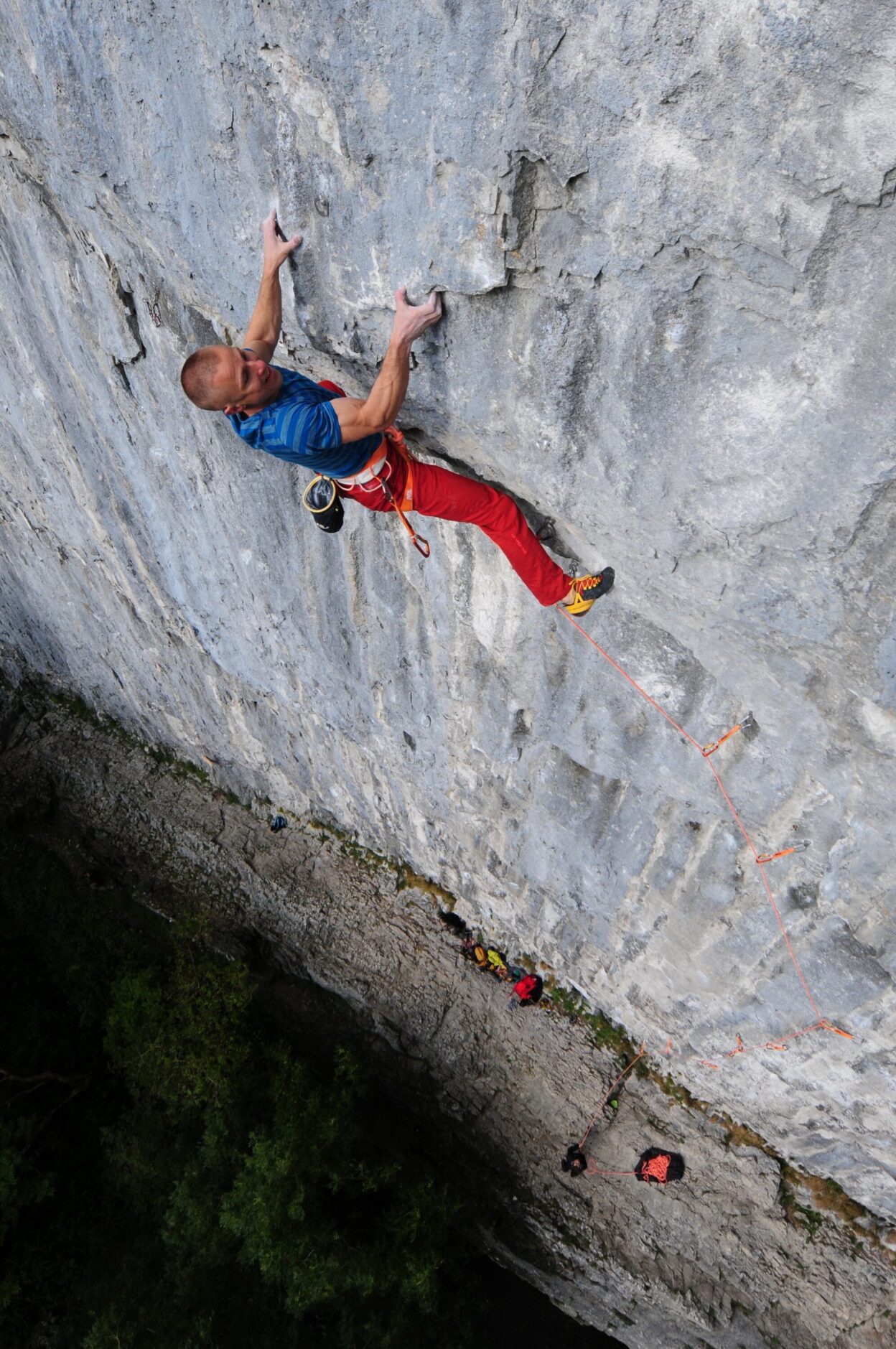
© Ian Parnell
I realised then that the desire to live was actually pretty huge after all, and there I was, alone on that huge wall, fighting for my life
That’s not to say that any climber who climbs a route like Indian Face is being selfish, this feeling of guilt and selfishness pertains to my own feelings at the time, which related to me losing Rachel. I remember thinking this ridiculous idea that I had climbed 8b sport and the Indian Face is only 7b so I had this huge physical margin. I had climbed winter routes on Ben Nevis with no protection and run the rope out for over 50 metres, so at least there is some gear on Indian Face. I’d developed the boldness from winter climbing and the physical resilience of sport climbing, so if I just put the two together, it would be alright! However, this was totally flawed logic and it quickly unravelled as I climbed the route. The aforementioned bubble burst and I was left wondering, what the hell am I doing here?
I realised then that the desire to live was actually pretty huge after all, and there I was, alone on that huge wall, fighting for my life. The trouble with Indian Face is you can’t just shut your eyes, take a breath and sprint for the top like you can on a short spicy grit route, you are on this climb for the long haul.
The face of climbing is changing at an unprecedented pace. It’s no longer just an outlet for the anarchists and social introverts but a much more mainstream sport. How do you think this explosion in climbing is playing out, specifically regarding traditional climbing?
A really good friend of mine, Patch Hammond, likened climbing to snooker – specifically trad climbing. Patch is an intellectual, so I was curious to see how he was going to back this observation up. He said the Chinese have decided that they want to dominate at snooker and consequently they have thrown billions at it, opening up snooker academies and investing in psychology coaches, similar to the British Cycling approach – but they are not winning. Whereas, if you look at all the British snooker players they all come out of working men’s clubs and pubs, drinking, fighting, smoking with a bit of grit and anarchy about them. That’s trad climbing, with sport climbing you can sort of do it with the academy approach, but there is a sort of X-factor to trad.
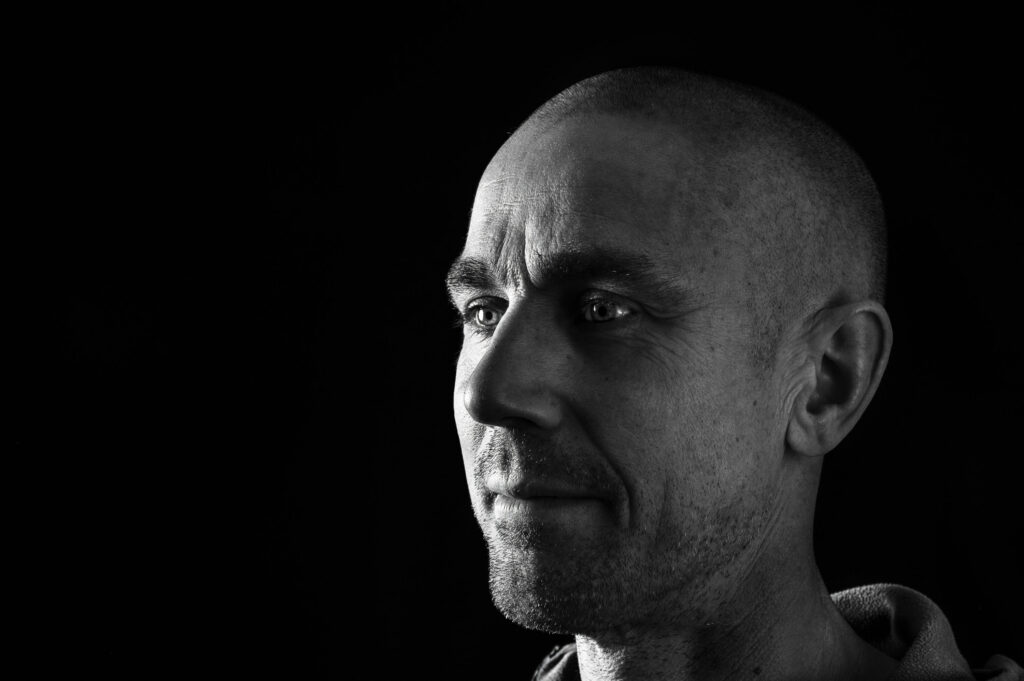
© Marc Langley
If you look historically at all our best trad climbers, they are a bunch of total lunatics, oddball misfits somewhat unhinged and unpredictable. Even in the modern era we have the likes of Franco Cookson, Robbie Phillips and Anna Taylor to name a few. They are all pretty unusual, colourful people with big personalities. I actually think there is a lot of truth in what Patch said.
The modern generation of climbers seem a bit pampered to me, and we see quite a lot of grumbling online about some of these amazing modern facilities. It makes me laugh when I remember how we used to scavenge mangey, flea-bitten mattresses from skips to put in our damp, mould-infested cellars and then climb on splintery home-made holds under a flickering fluorescent strip-light. I can’t help but wonder if the chasm is too big to make the jump from the world of gourmet coffee and designer volumes onto a loose, vegetated sea cliff.
How does this current phase in your climbing compare to your early career? Do you feel there is more to come?
There are no more routes like Lexicon to come from me despite feeling like I could climb the equivalent or maybe even harder. I was recently with Craig Matheson who has just climbed Hard Cheese, which is the other joint hardest route in the Lakes.
There was no doubt that climbing Indian Face was a way of exorcising the demons which resided in my subconscious
Craig is younger than me and you can see he is on this steep curve and really going places. I feel like I’ve been on that curve for a long time now. I think you could die an unhappy person if you constantly think you haven’t climbed hard enough and need to keep driving forward. There was this element of dissatisfaction that kept driving me forward.I think I needed that in order to really push my limits – but not now at this current phase in my life. If you look at other climbers who are just cruising, without obsessing about goals, then I guess they are having more fun in the conventional and immediate sense.
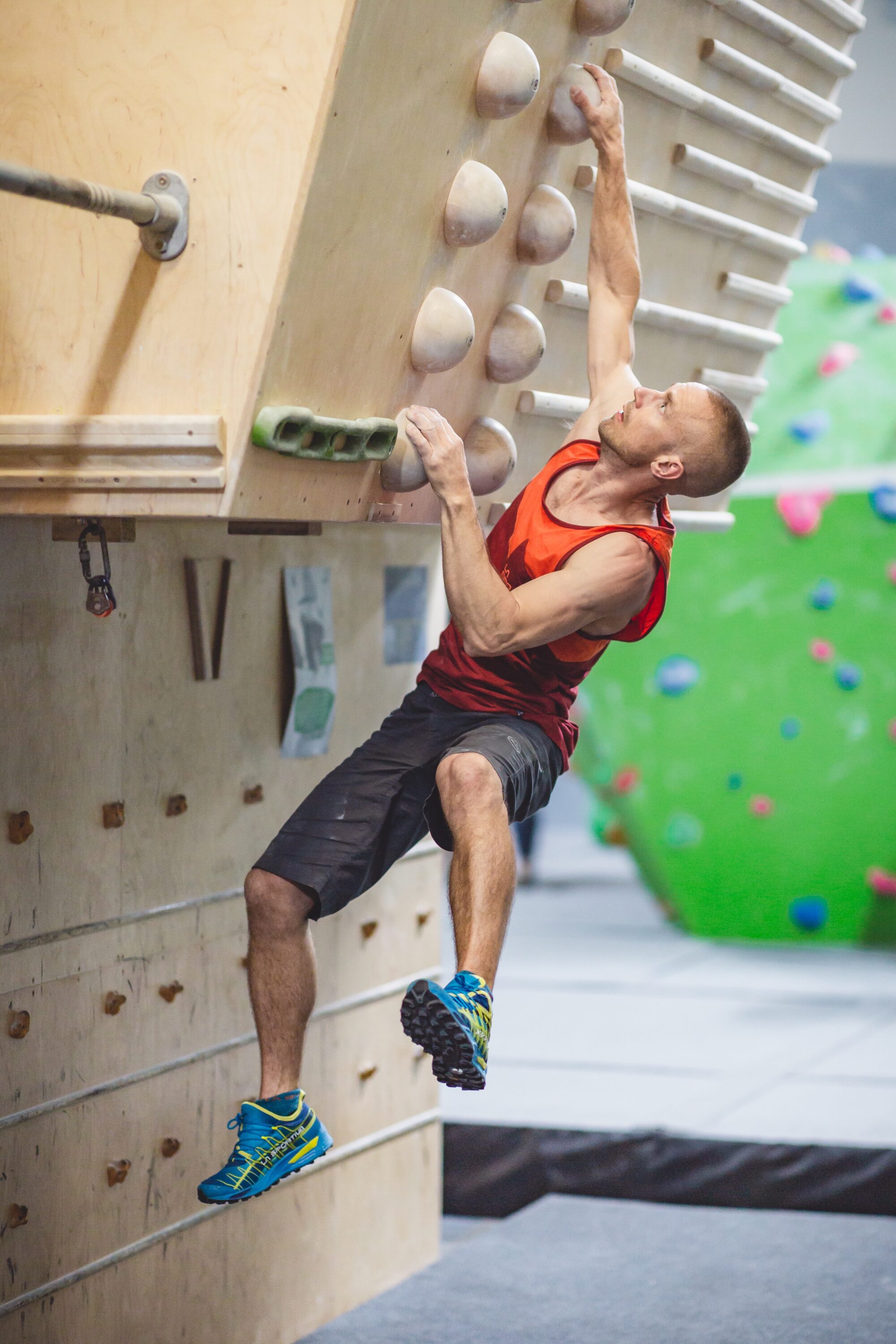
© Ben Grubb
Don’t get me wrong, I absolutely loved doing Lexicon but this commitment came with a fair amount of sacrifice. I was very much in my own world, analysing every aspect of my performance in pursuit of marginal gains. In some ways it can feel a bit dehumanising, operating like some sort of highly-tuned performance car and I don’t want to live my whole life like that anymore. I want to spend more time with my family and close friends.
I have made a conscious decision now to feel happy and satisfied with Lexicon and this hit me like a steam train when I topped out. I knew I had totally rinsed the tank and it was time to start a new chapter of sorts.
In the past three years you have put up some significant new hard routes. So what’s next?
After Lexicon, I’ll be totally satisfied to be one of those 50-something-hustlers, who can still rock up to Malham or Kilnsey and climb middle 8 routes or onsight E6 trad. I still want to climb at a solid level but not go for these mega projects that are all consuming.
My family has been amazingly supportive throughout the big projects, so now, taking my daughter swimming or my son to Cubs feels like a higher priority than training. In my heart I’m an all-rounder. I really like ice-climbing for example, but I had to give it up when training for projects like Sabotage and Lexicon.
I’m looking forward to rediscovering the variety within climbing and also rekindling the friendships, which to an extent are sacrificed when you’re striving so hard towards one dedicated goal. So, it’s not the end but also it is the end of one element of my climbing if that makes sense.
This interview first appeared in issue 08 of BASE magazine, in summer 2022. Subscribe to get all copies delivered direct to your door for FREE or select one off back-issues here. Check out more interviews with some of the most interesting characters in adventure today, here.
Don’t miss a single adventure
Sign up to our free newsletter and get a weekly BASE hit to your inbox
You might also like
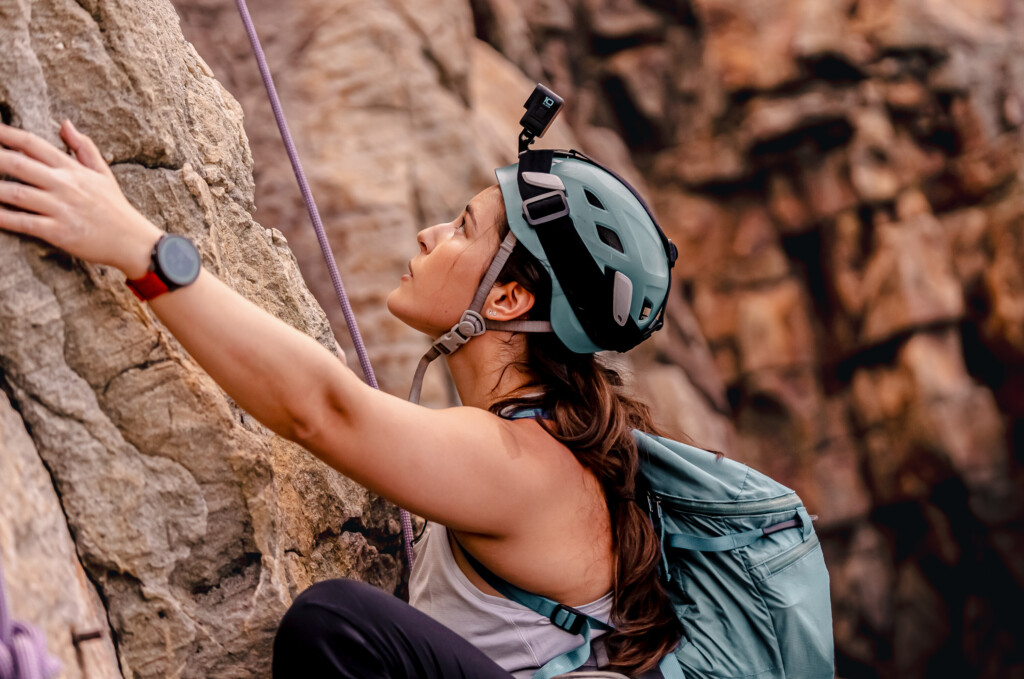
Photo Essay • BASE editorial team • Mar 18, 2024
Hunting happiness through adventure in Taiwan
BASE teams up with adventurer Sofia Jin to explore the best of Taiwan's underrated adventure scene.
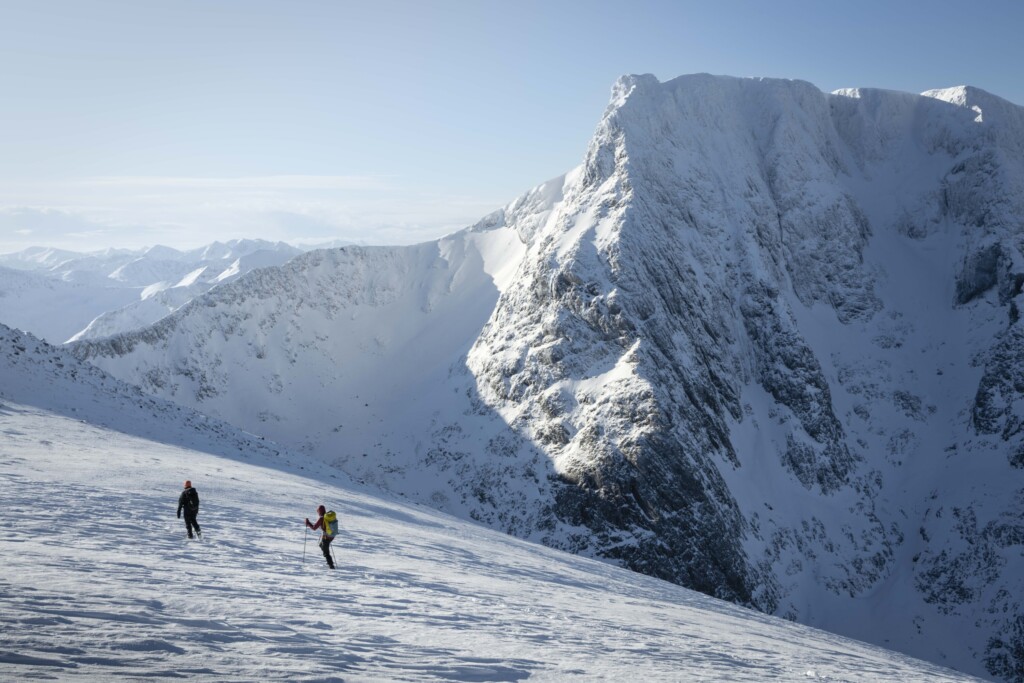
Story • BASE editorial team • Nov 21, 2023
Five Epic UK Climbs You Should Try This Winter
Craving a snowy mountain adventure? Inspired by the Garmin Instinct 2 watch (into which you can directly plan these routes), we've compiled a list of five of the best for winter 2023-24!


Video • BASE editorial team • Jul 04, 2023
Zofia Reych On Bouldering, Life And Neurodivergence
Climbing is a driving force in Zofia's life, but for a long time, it also seemed to be a destructive one
